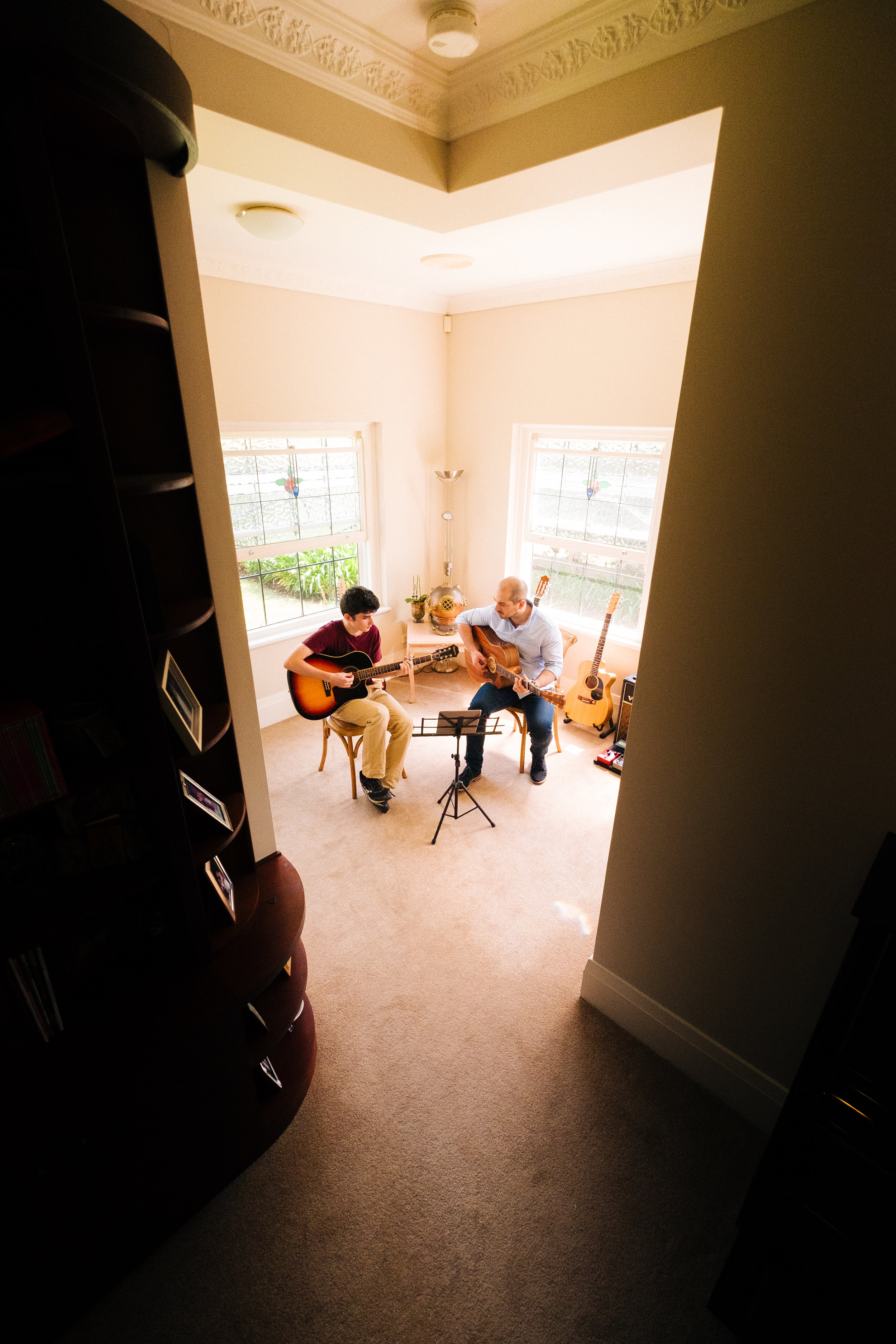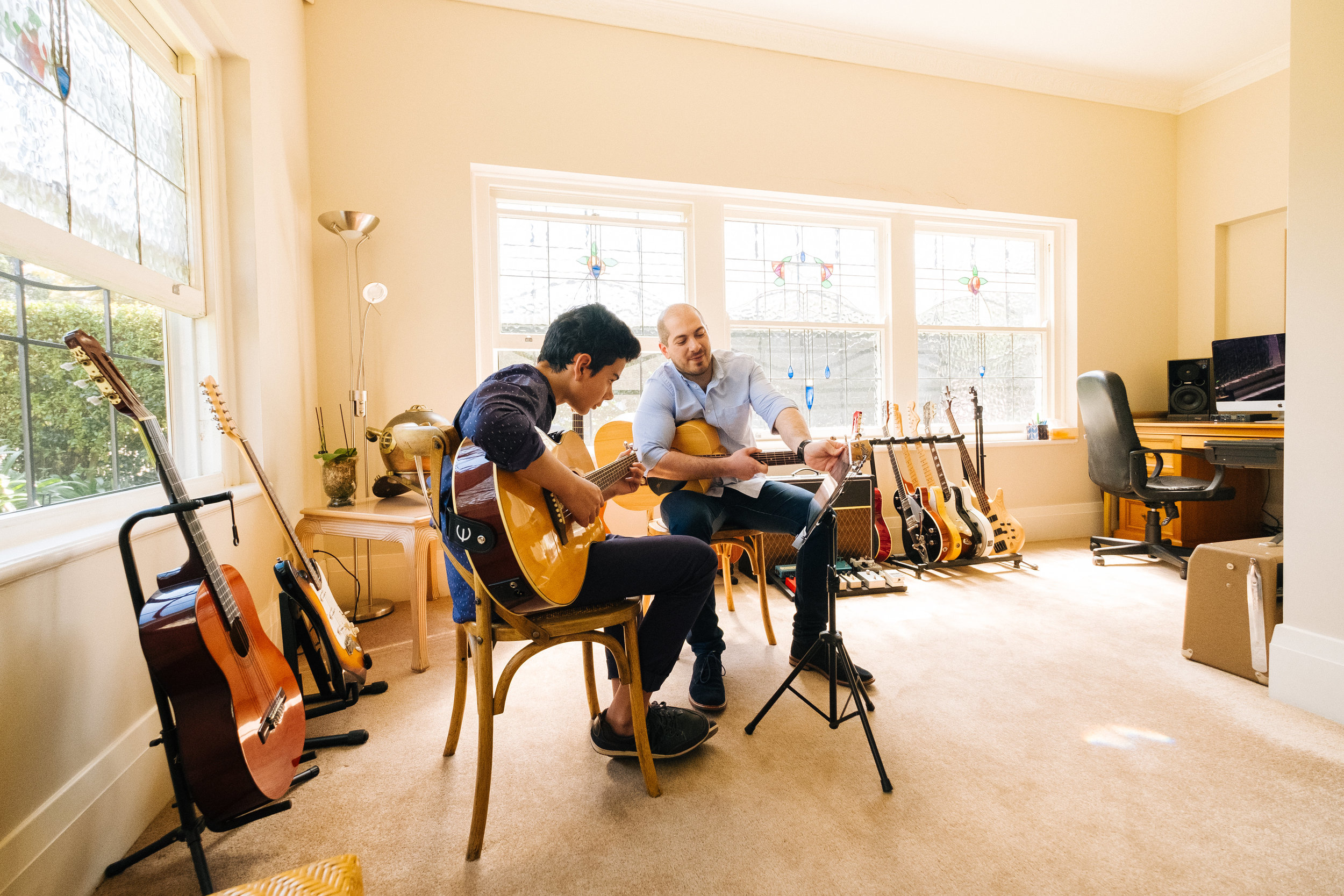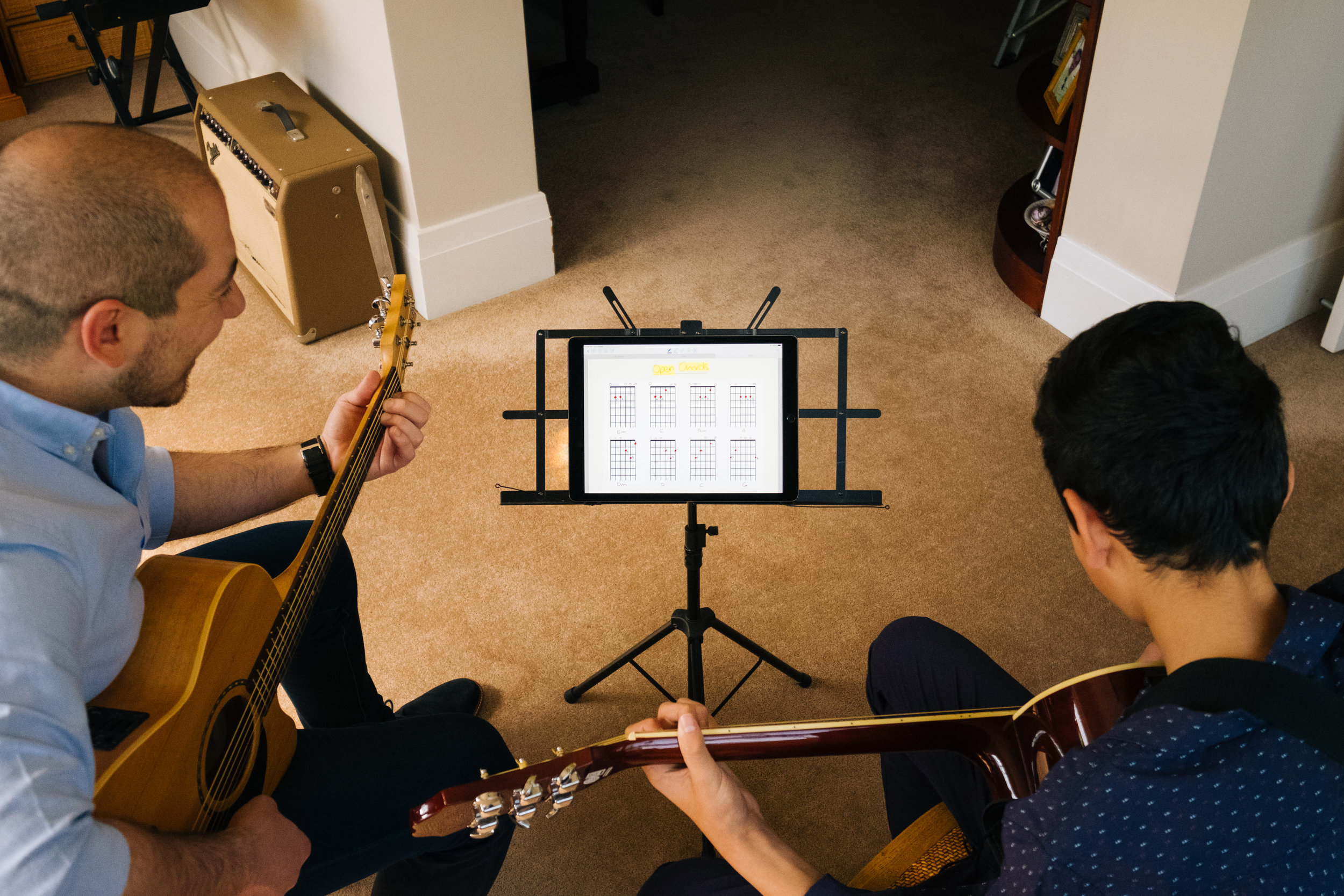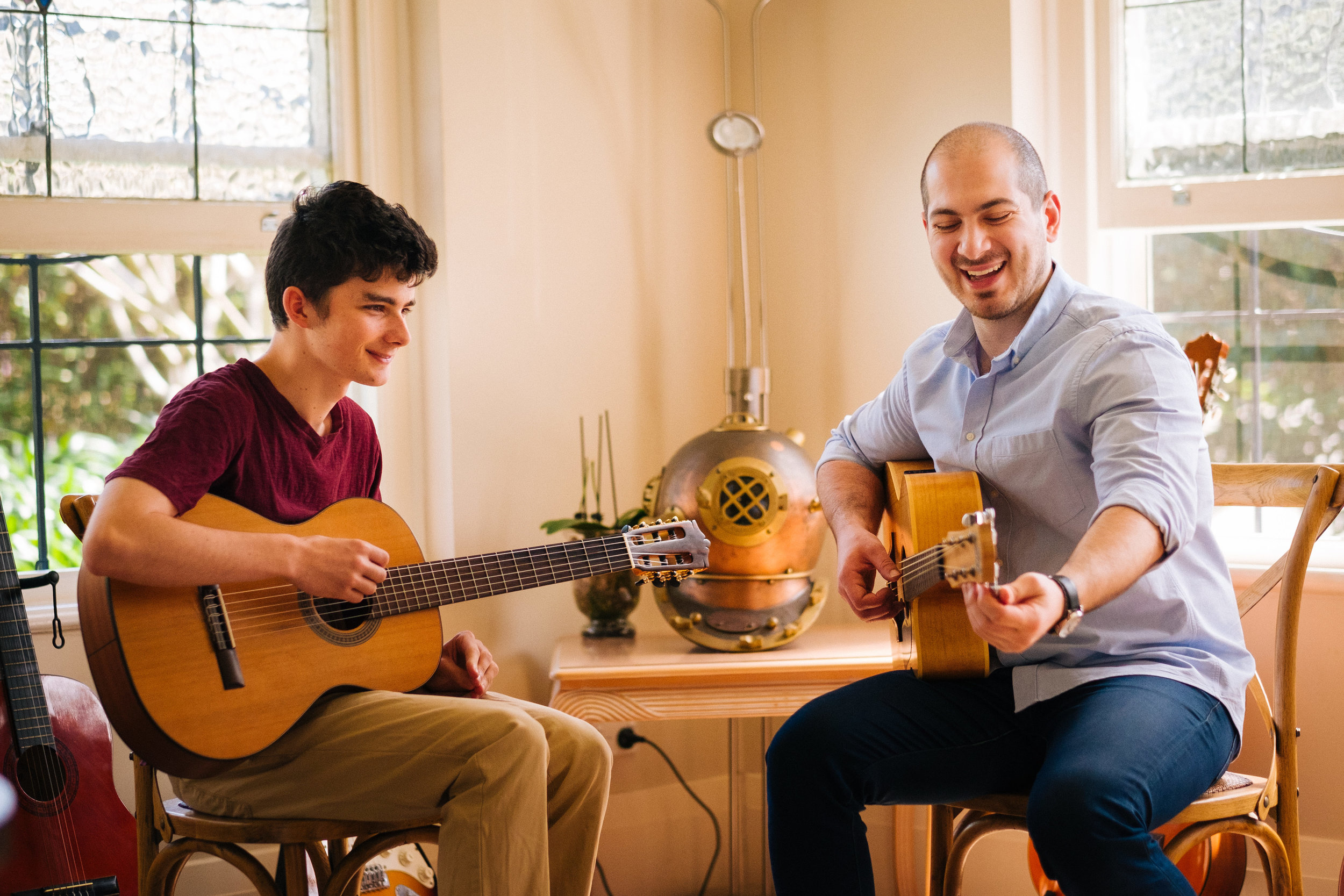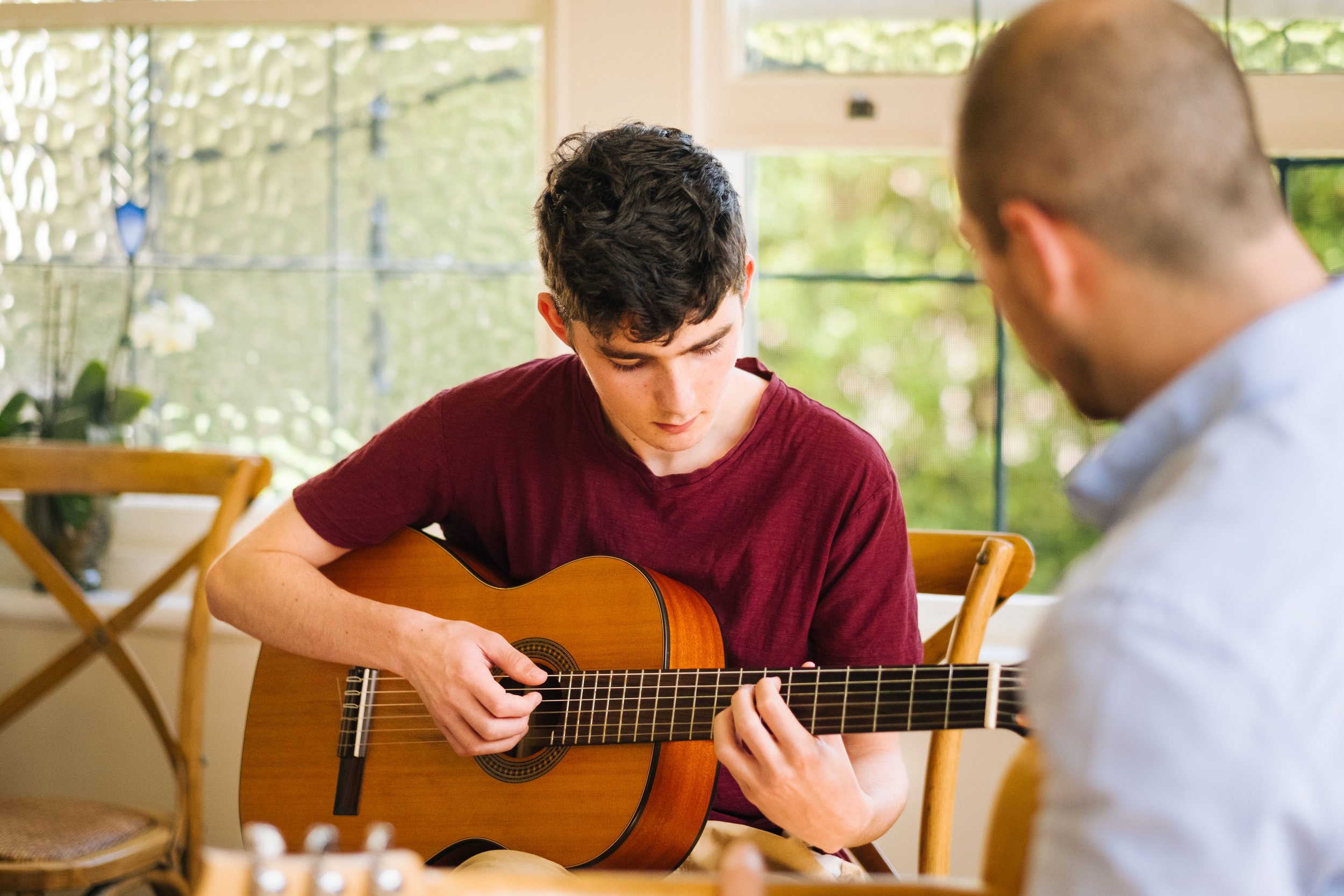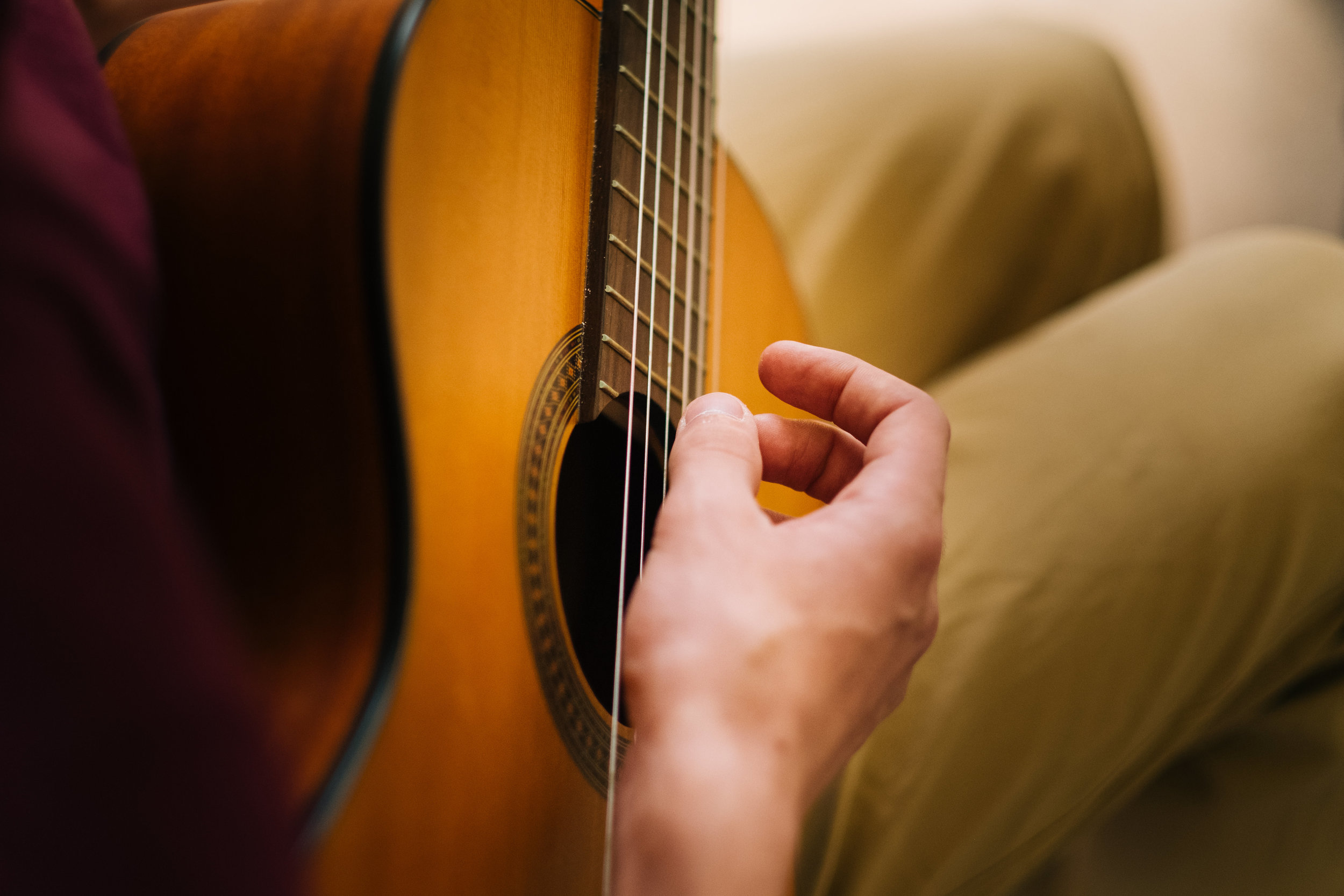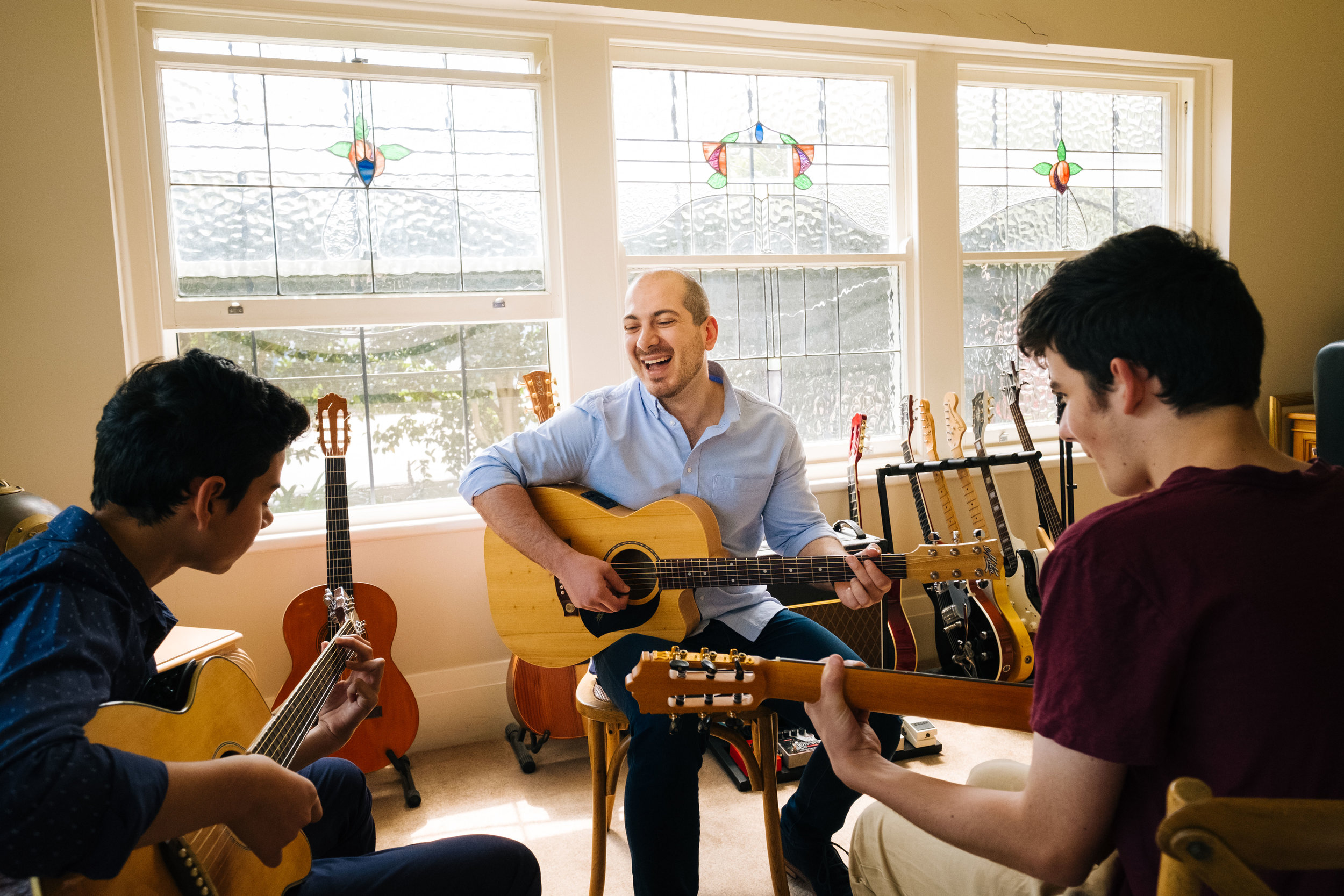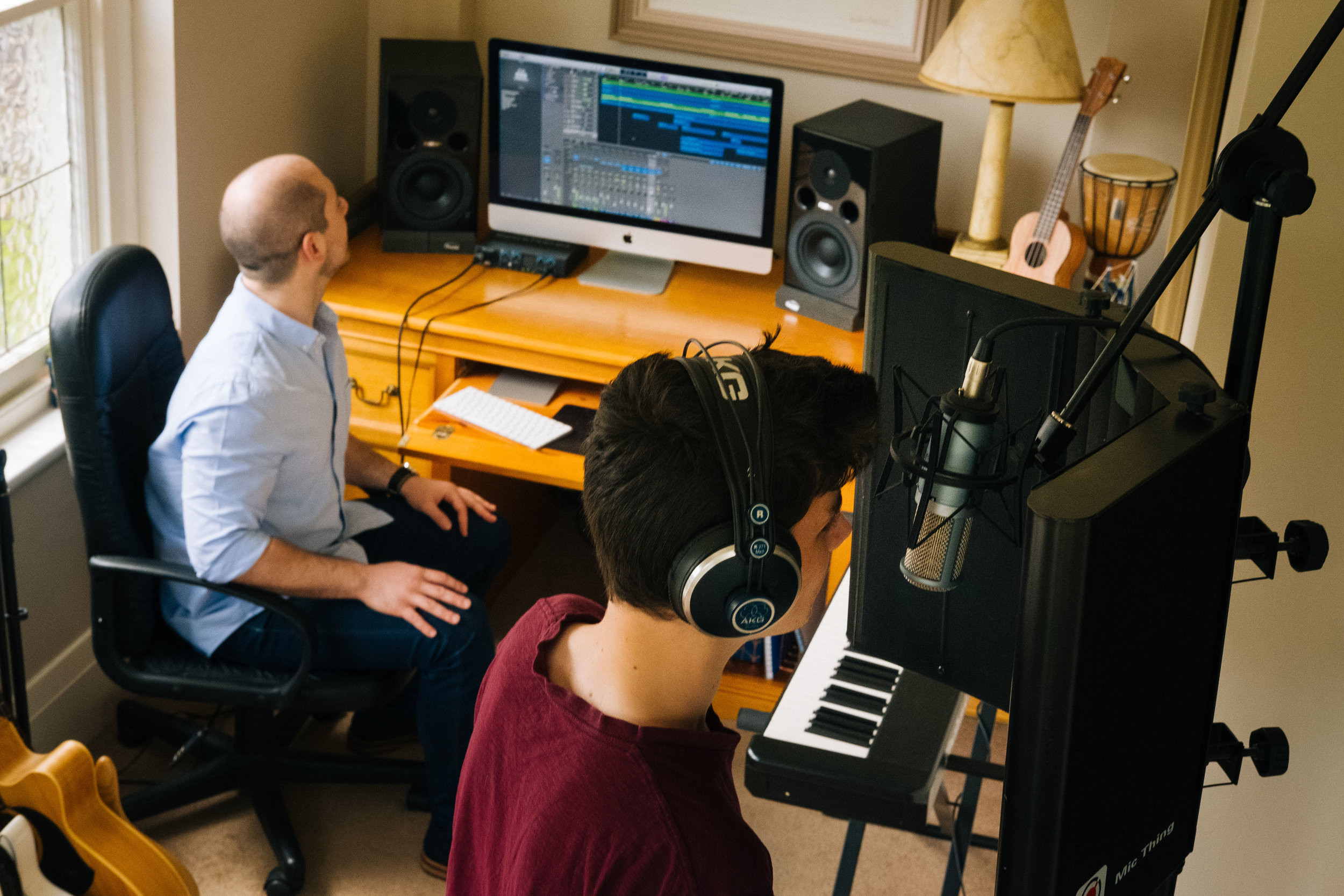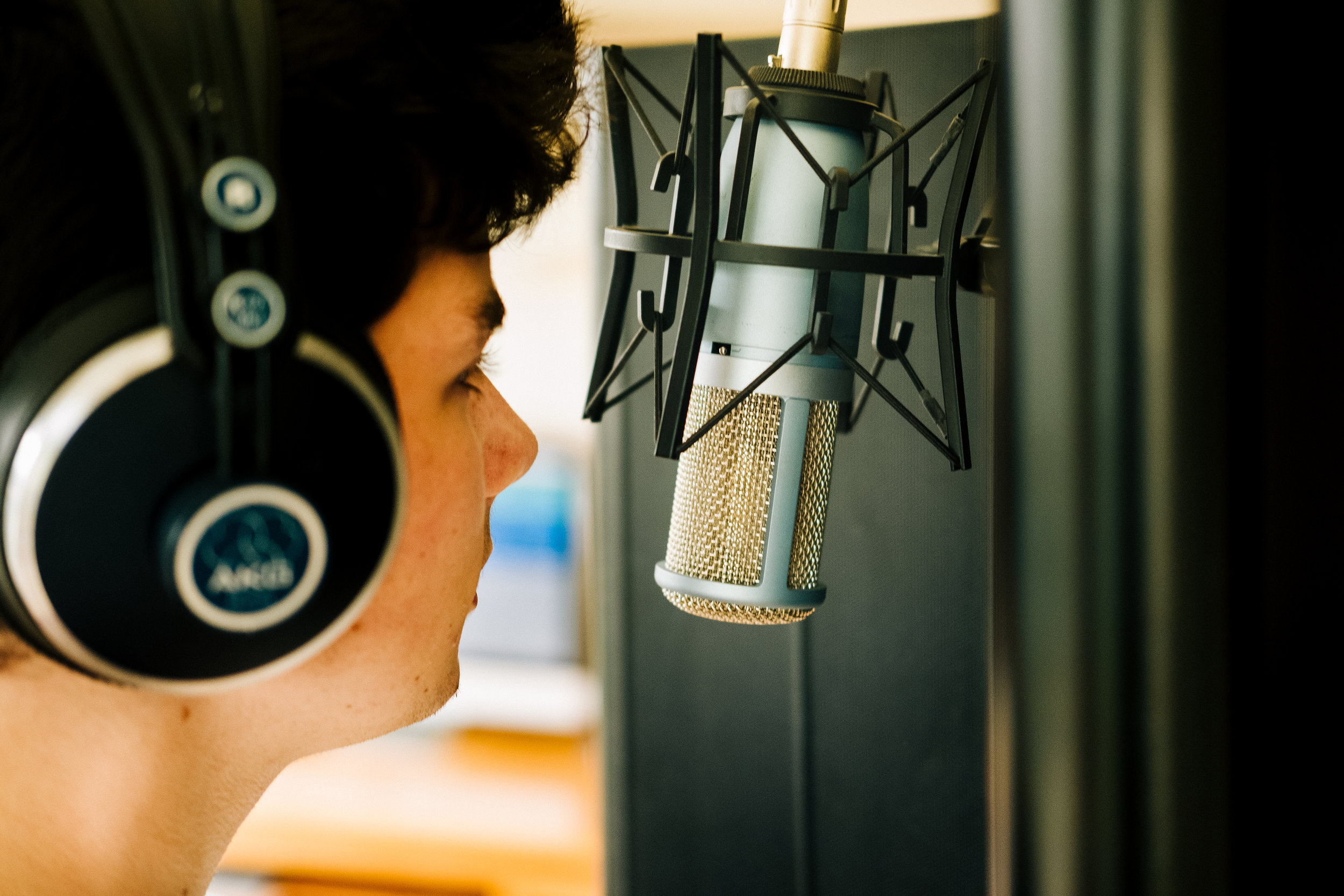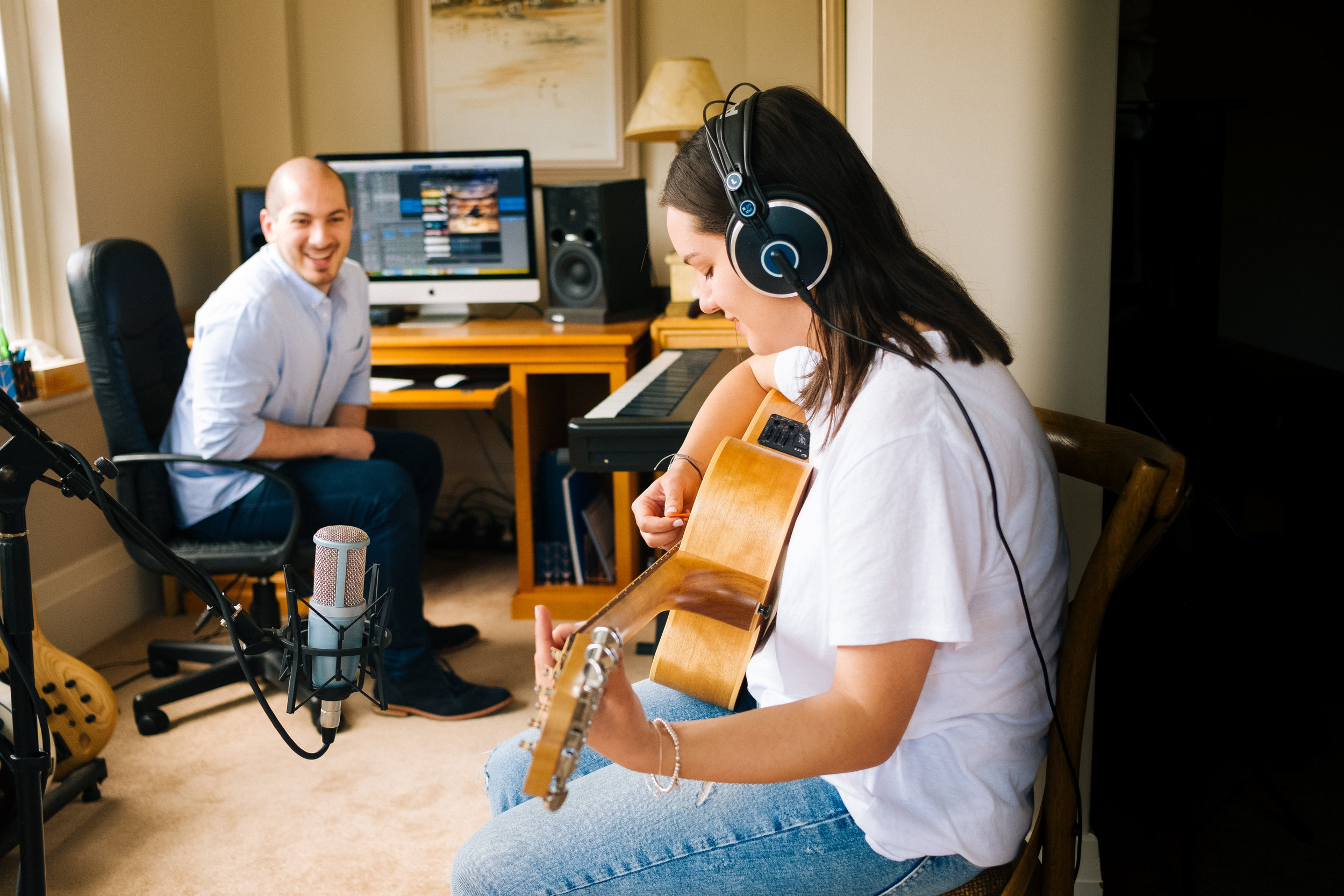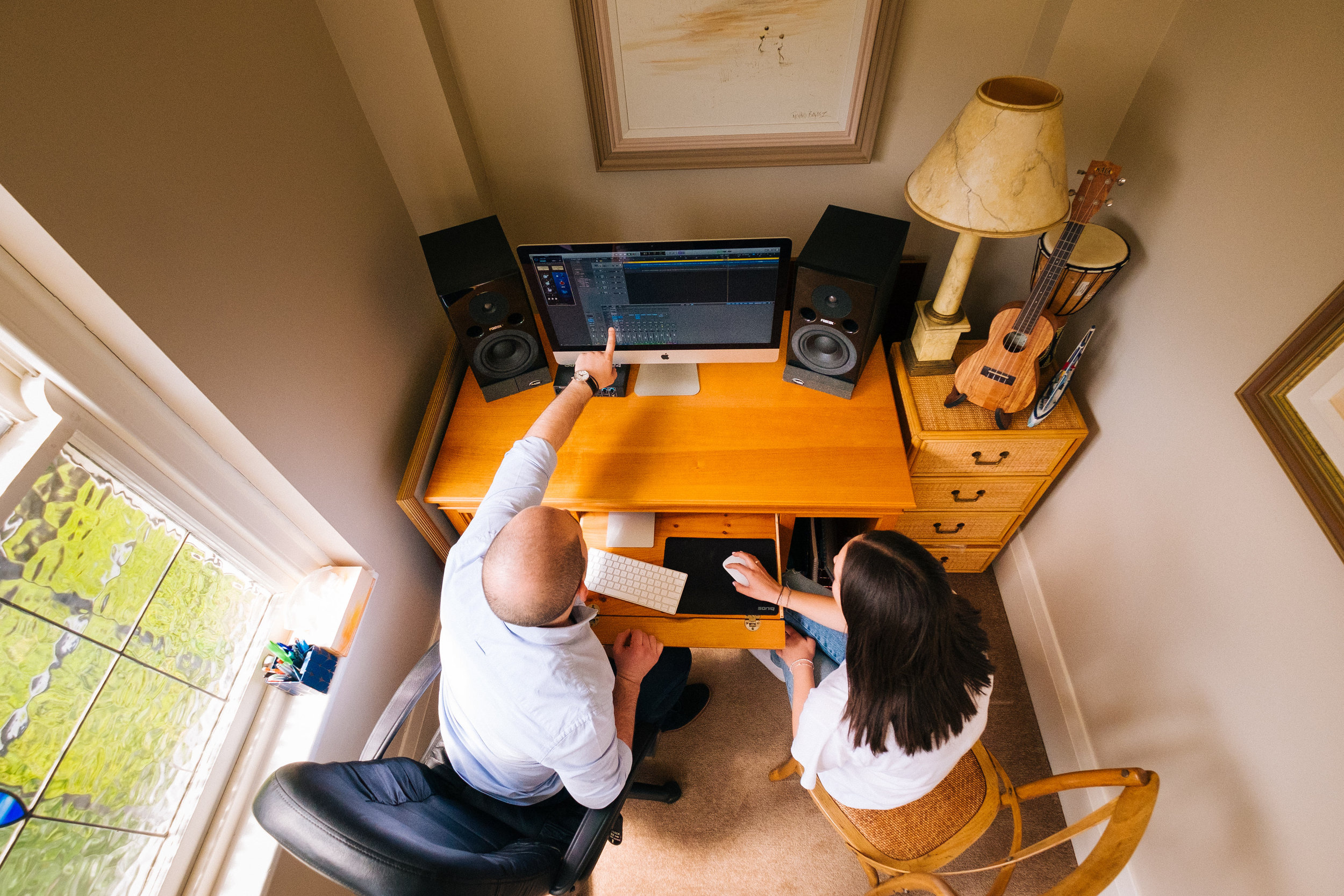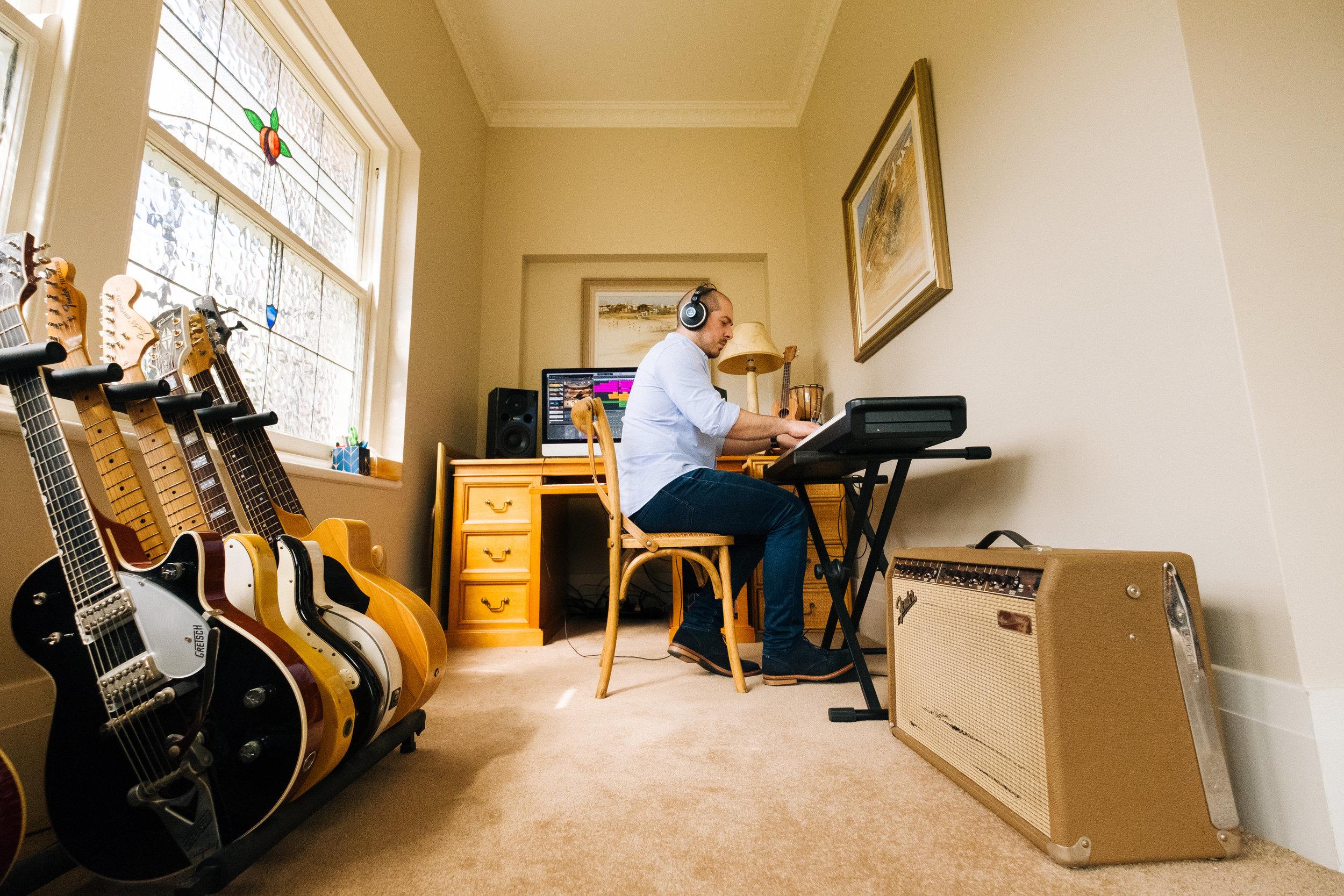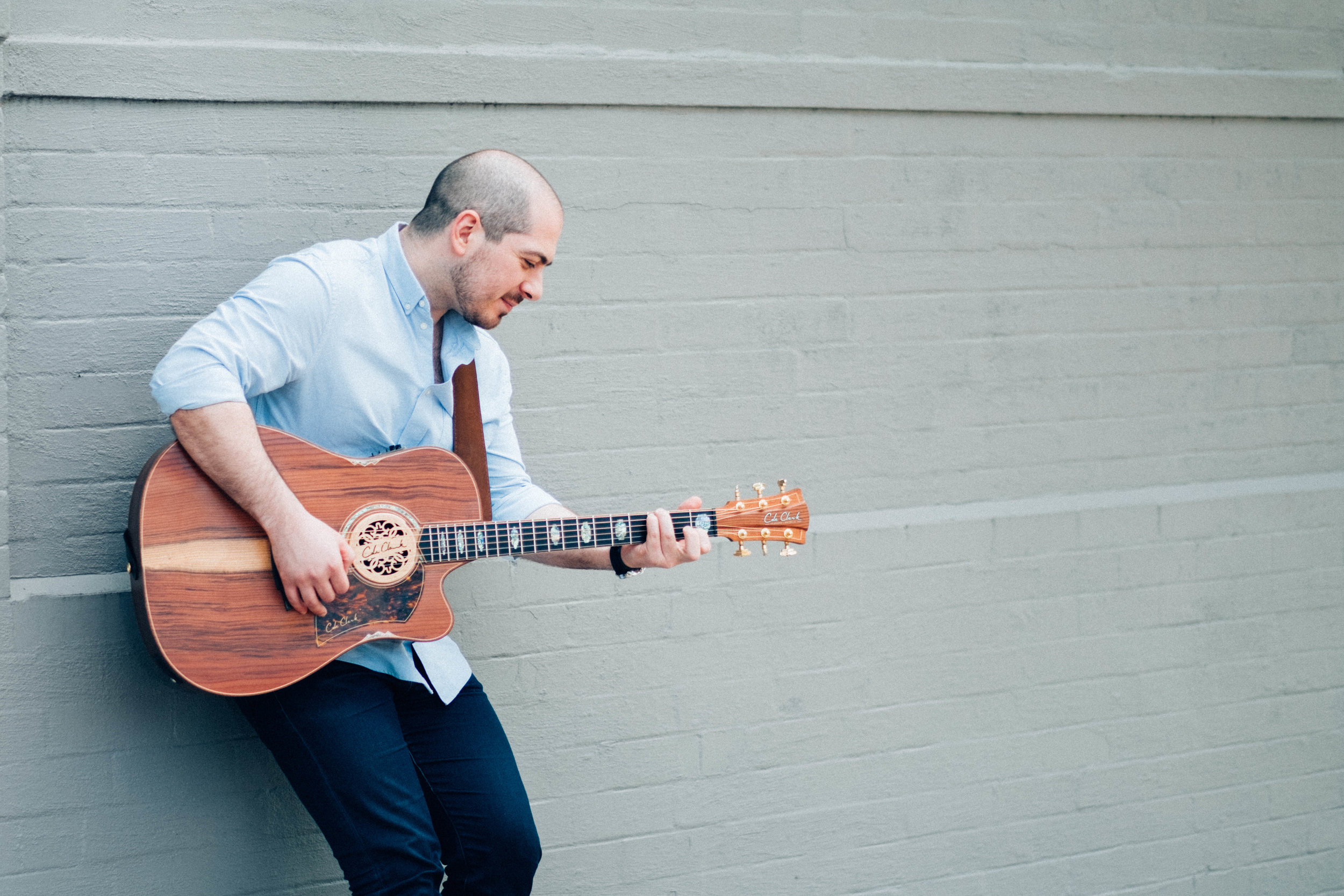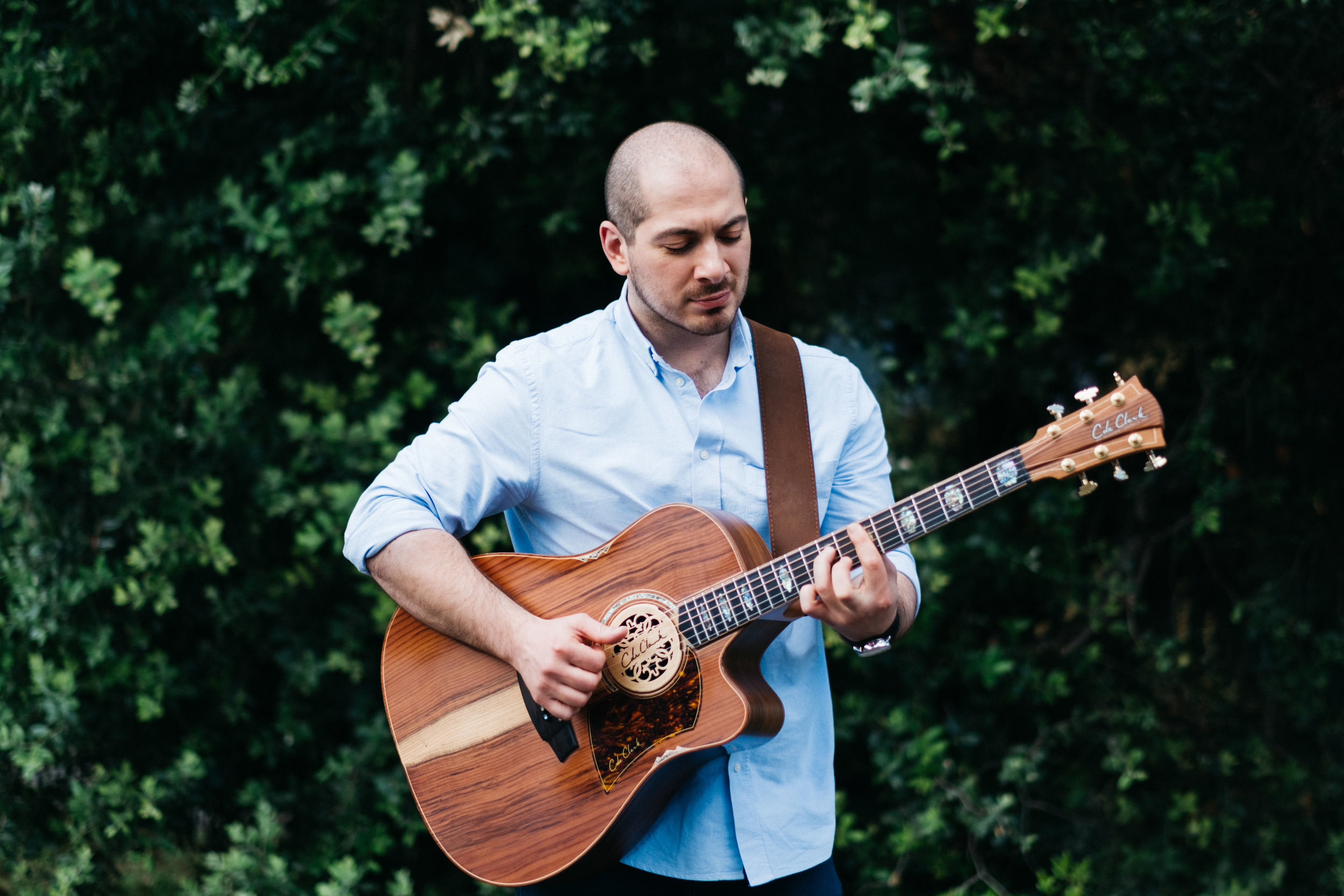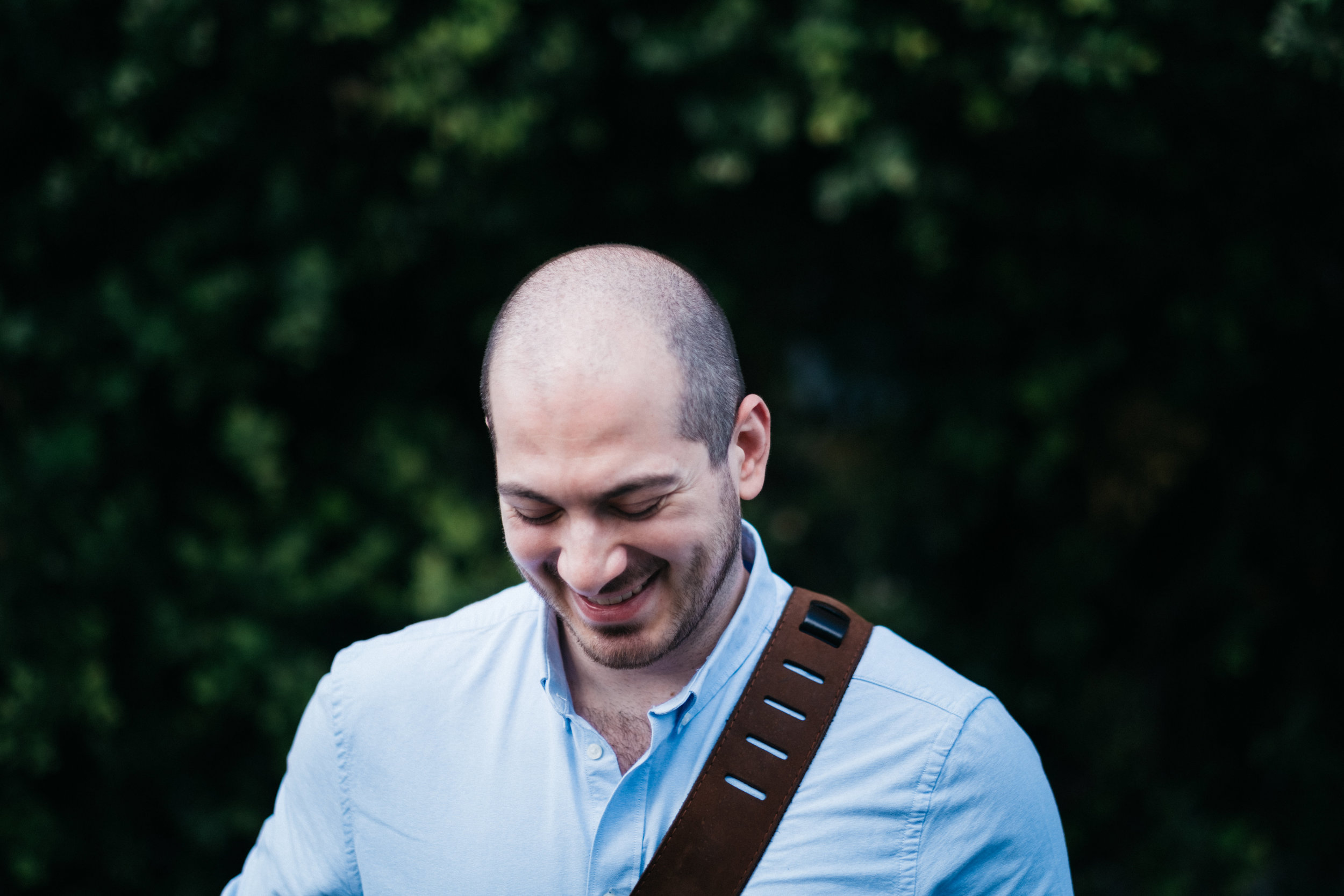If you’ve ever photographed a musician, you would agree with me when I say it seriously is the best. Photography and live music? Let’s just say it is a sweet melody. In saying this, there is just something so special about photographing a musician in his/her element. The artist and the canvas before our eyes and we are just there to capture those raw moments. Allow me to introduce Mark Tsangaris.
I’ve had the pleasure to photograph Mark Tsangaris from https://marktsangarismusic.com/ . I’ve known him previously and we’ve connected so well throughout the years. Mark, you’re the man and I appreciate our friendship.
Mark’s home studio is beautiful. The way how the sun beams into the space is equivalent to relaxing on the sand at Coogee Beach. We’ve scheduled our time together in the middle of summer, however the day decided to be cloudy. In most cases, a cloudy day is actually a good day to shoot because it diffuses the light and gives even lighting. However, we wanted to capture the warmth Mark’s space would often give on any given day. Regardless of the clouds, the sun decided to shine when our session began.
After our time together with the students, Mark and I went around his neighbourhood and discovered some awesome spots to take some portraits of him. We could’ve gone for the traditional white background shots, however with Mark being a creative, it made sense to add creative elements in his photographs as it best represented who he is.
General Tips for Photographers:
If the ideal weather isn’t happening on the day of your shoot, make it happen regardless. There are benefits in most weather conditions and it truely is a matter of identifying what those strengths would be. Here are some general guidelines and tips:
Harsh Sunlight - Shoot in manual mode. With harsh light, you need to control the amount of light entering your camera even more so. In addition to this, identify the areas that have shade in your location. The more shade you can find, the more options you have in the variety of settings to photograph. In instances where there is no shade, you can create your own shade by investing in a trigrip reflector ( better if you have an assistant), or expose for the most natural skin tones you can over the environment you are in.
Cloudy - Personally I love photographing cloudy days the most. With the light being diffused, you have much more control on overexposing and underexposing and yet it would still be very flattering. In terms of settings, I’d roughly use ISO 400-800, wide aperture and adjust the shutter speed according to the correct exposure ( On my Fujifilm cameras, I personally do not go under 125 ss.)
Little Sunlight - I would encourage using a flash to fill in some light, however if we are shooting all natural lighting, I would instantly look around the environment and identify where all the light can be found. This is where you can go for those very beautiful contrast shots ( in addition to noise as you are going to need to bump up the ISO,) and I would aim to capture natural expressions with this kind of lighting. In cases where the lighting drops drastically, I would strongly encourage doing research before the shoot and find some quality indoor settings that would be very fitting for the shoot.
General Tips for People Getting Their Portraits Done:
Clothing - Ideally it is best to stick with neutral colours. Clothing with patterns on it could be a hit or miss depending on the environment, and graphics is definitely not recommended for a shoot. It is best to have 2-3 changes of clothing for variety when for different needs that may arise in the future. In Mark’s case, it was the same clothing, however the different environments was enough to showcase variety.
General Portraiture
I’ve photographed very photogenic people and people who would often cringe being in front of the camera. What I’ve learnt is that it is so important to connect with the photographer before the shoot. Because I knew Mark personally beforehand, we were able to hit things off really well. If you are getting photographs from someone you’ve never met, I’d strongly encourage asking for a quick coffee meet up, Skype session etc. and get to know the person behind the camera. I cannot express enough that the more you become familiar with the photographer, the better the photographs will be.
You want to be able to look at your photographs and say, “This is me.” Instead of going for the traditional white background headshots (and for the record, there is absolutely nothing wrong with this,) I would often encourage my clients to allow the environment reflect the person as well. Imagine a doctor being photographed in front of a circus or a painter being photographed in front of a coffee machine. The environment is just as important as the subject in a photograph. This of course is a personal opinion of mine.
Communication is so key. Let your photographer know what you are looking forward to, what you are concerned about (i.e. nervousness, scars, weather etc…) and what you can expect after the photoshoot. Even ask generally how the photoshoot will look like. I find that by having a mental timeline, it actually brings comfort because you relatively know what to expect.
Don’t just think about how you are going to use the photos now, but think about how you may use the photos in the future. Will the photos be used for possible marketing material? Will it be printed? If there are a bit of possibility, bring these up to the photographer before the shoot and he/she will look after you. He/she may be more intentional with their shots by leaving space next to you in a photograph for text as an example. So once again, think about the present needs along with the future needs. Your future-self will thank you for this.


